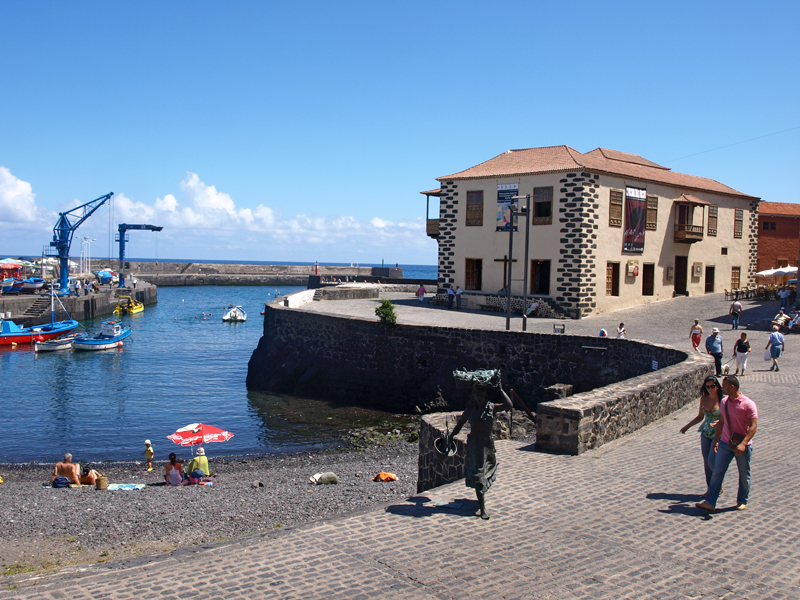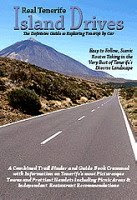A question that is regularly asked by first time visitors to the island is ‘what’s the difference between the north and south of Tenerife?’
It’s important to understand what people are normally actually asking by this. What they really mean is ‘what’s the difference between the southern resorts and the northern ones?’ As there is only one main northern resort, that really means the southern resorts and Puerto de la Cruz.
I make this distinction because there is a massive difference between the main southern resorts (Los Cristianos, Costa Adeje & Playa de las Américas) and the towns in the hills behind them.
The most popular answer is the weather and whilst there’s no denying that there are differences, it isn’t the only one, or necessarily the most important. You can sunbathe in both the north and south of Tenerife at anytime of the year. There’s even a place in the north called Puntillo del Sol because it’s rare that the sun doesn’t shine on it. But the weather is generally better in the south (from a sunbathing rather than an agricultural point of view).
The big difference is in what’s on offer and the character of the opposing sides of the island. Las Américas/Costa Adeje offers beaches, water sports, international dining, very diverse entertainment, lively clubbing and all the mod cons of a resort developed to meet the needs of visitors ranging from those looking for cheep ‘n’ cheerful fun in the sun to those looking for more sophisticated dining and entertainment. Only having existed since the second half of the 20th century the area doesn’t have a sense of history or traditional architecture.
Puerto de la Cruz has been around for centuries and therefore does have a sense of history and traditional old buildings, but not the levels of grand colonial architecture found in places like La Orotava or La Laguna. It was a town, or more accurately a port, first and foremost and because of that its streets exude a completely different atmosphere from those of Costa Adeje. Like the southern resorts, there are plenty of restaurants to choose from, only in Puerto most are Spanish or Canarian; however, nightlife is a different kettle of fish. Many people think that it’s low key – not exactly an accurate assumption. The difference is that the nightlife is aimed at the local population, so a lot of live music bars don’t get going until late and aren’t frequented by most visitors. Much of the nocturnal fun is provided at open air fiestas. There are beaches (black sand), but no real water sports.
Whether you’d prefer south or north depends on personal preferences and what you want from a holiday. I have plenty of friends who like both. There are ex-pats who live in the south of the island who enjoy spending weekends in the north and there are many Canarios who head south for weekends. But some people are definitely only suited to one or the other. The question is how do you know for sure which is for you whether for a holiday or for longer?
I have a litmus test; however, you have to visit Puerto de la Cruz to be able to apply it.
Stand for a few moments at Puerto’s harbour at 10am on any morning. If you do and think ‘okay, so what?’ the chances are you’ll enjoy the main southern resorts more. And if you’re more suited to the north…you’ll know it at that very moment.
Say Halo Halo Halo For Saintly Memories
8 months ago






5 comments:
I live in the metropolis (La Laguna in fact) so I reckon I'm neither north nor south, but east. And what about the west, like Los Gigantes?
That said, I much prefer Puerto to the south. I like the lush, green climate and flora there more than the semi-desert in Abona, Arona and Adeje.
Good point about the east and west James.
This was a quite simplistic blog about the perceptions of people who don't really know the island and tend to talk about it in terms of resorts more than anything else...but you've given me an idea for a follow up blog - thanks.
Totally agree about the scenery.
Compare the La Orotava Valley, even with its over developed lower part, with Costa Adeje - no contest...which is why many newpsaper articles use photos of the north coast even when articles are about the south.
Although, for numerous reasons, I have often wished I lived in the North, and I'm sure I don't need to list them for you, the one thing I find I miss is the cosmopolitan feel the south has these days. My friends here come from several different countries in South America, in Europe and in Africa. I adore Santa Cruz and La Laguna (and I fall into the typical southerners trap of classing those cities as "the north", when I appreciate they aren't true north), I love the history, the culture and the shopping, and I know I'm making a sweeping statement. That's just a generalization. Strangely, and this only occurs to me for the first time as I type, I think the south may have more "get up and go", and no-one is more surprised than I am that I said that! I haven't lived in both places so it isn't fair to comment. The raw beauty of the desert was quite palpable once, but most of that has given way to concrete of course. I should try the north.
An interesting comment as always islandmomma.
I think it's fair to class Santa Cruz and La Laguna as 'the north' - the weather forecast usually used for 'the north' is taken at Los Rodeos and both city councils' websites refer to themsleves as being in the north east. But clearly there are massive differences in climate between both of them and the north coast as well.
It's also interesting what you say about the cosmopolitan feel of the south. Puerto, for example, has a sizeable gay community, an Asian community (the Indian community club is a great place for some authentic Asian nosh), a South/Latin American community (fab mojito bars that could be in downtown Havana), Brit, Scandinavian & German communities...but yet remains overwhelmingly Canarian. The people in power are the same families that have been in power for years. On the up side there remains a very strong sense of family and community. On the down side there's not always a willingness to embrace change or look externally for solutions to problems - it's a bit of a quandry.
I'd like to keep some of the old fashioned values, but lose the dated attitudes. Maybe that's too much to ask for.
I'm not convinced though, despite the shiny new look of some parts of the island (e.g. Del Duque), that outdated practices (I'm speaking politically here) are much different between any of the municipalities.
Post a Comment